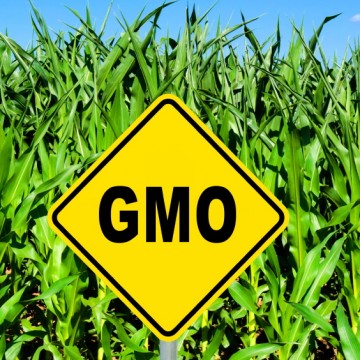Why Oregonians Should Say No To GMO Labeling
Tuesday, October 28, 2014

Photo credit: iStock
Whole Foods leaves out that last part, which is understandable given their current campaign against genetically modified organisms (GMOs). Yet a surprising number of common crops arose from this crude technique for altering genes.
This radiation breeding wasn't the work of some secretive proto-Monsanto. It was a publicly embraced research program and was, for a time, a bit of a fad. “Gamma gardens” produced new varietals and consumers could purchase “super atomic energized seeds.” Some enthusiasts went so far as to irradiate their own seeds at home. A lot of plants simply died, but quite a few useful mutants are still in use today.
Mint oil in your toothpaste likely comes from the Todd's Mitcham mint cultivar, bred via radiation to resist fungus. Much of the California rice crop descends from Calrose 76, a high-yield rice developed the same way. There might be mutant barley in your whiskey and beer. And then there's those grapefruits, whose bright red hue comes thanks to mutations induced by radiation several decades ago.
A Misinformed Population
No one seems to care that the random genetic changes that produced these traits are largely unknown or that the crops were released without in-depth study of their long-term impact on human health. Yet compared to contemporary techniques for modifying genes, mutating DNA with radiation is wildly imprecise. As one historian of radiation breeding put it, “If we think of modern [genetic modification] as taking a scalpel to the genome, mutation breeding by radiation was a hammer.”
Yet retailers like Whole Foods gladly sell these crops while urging us to vote yes on Oregon Measure 92, which would require labeling of foods made with GMOs. The implication is that among all the foods we consume, we should be especially wary of those designed through the conscious introduction of specific genes. Looking more closely, the label includes both too little and too much.
If you’re worried that new genes will be harmful to human health, then crops randomly altered with radiation ought to be labeled too. Indeed, an unintended consequence of hostility to GMOs has been to re-popularize radiation breeding because it's subject to less regulation and scrutiny. One effect of GMO labeling may be to trade known genes for unknown mutants.
If you're concerned about the economics of farmers having to buy seeds instead of saving them, conventionally bred hybrid seeds have long presented the same challenge.
Perhaps your objection is that GMOs increase the use of chemicals. This is a legitimate worry for products like Monsanto's RoundUp Ready crops, which tolerate herbicide and thereby encourage its use. But GMOs like Bt corn allow plants to produce their own defenses against pests. Others, like Hawaii's Rainbow papaya, rescue crops from devastating diseases. A mandatory label lumps all of these together, obscuring more than it informs.
Still, one might ask, what's the harm in labeling GMOs so that consumers can decide for themselves?
One complication is that even neutral information can carry non-neutral implications. Mandating the label implies that the government has decided that GMO content is something consumers should consider avoiding.

There might be less resistance to GMO labeling if advocates weren't so prone to making wildly unscientific claims to stigmatize the technology and drive it from the market. Instead, their hope is that the GMO label will act as a “kiss of death” for the foods carrying it.
Strategic Politics
As a result, GMO labeling has become, in the words of former GMO opponent Mark Lynas, bad science but good politics. When consumers are convinced that they are being denied important information about their food, the industry's counterargument that labeling will make it more expensive lacks the same emotional resonance.
Ultimately, the best case against GMO labeling is a case against lazy thinking. Judging crops as diverse as virus-resistant papayas, RoundUp Ready soybeans, and Bt corn by their method of development rather than by their actual effects is a poor way to make decisions.
For consumers who do wish to avoid GMOs, the organic and non-GMO certified labels already provide guidance. And as the booming growth in organic groceries demonstrates, profit-seeking capitalists are eager to cater to their preference. That's a great thing, but as with other diets built around conceptions of purity, it needn't be the concern of the entire food business.
If there were evidence that GMOs are inherently harmful to the environment or human health, then labeling would make sense. The truth about genetic modification is much more banal. Like any technology, it has uses good and bad. Reducing that evaluation to a single mandatory label cannot sort that out.
If Measure 92 does pass, then it will be up to us to judge the new GMO labels responsibly. At best, the labels will be like the mandatory cancer warnings plastered all over California, ubiquitous and generally ignored by all sane people. But they may effectively frighten consumers, and then crops with the potential to reduce pesticide use, increase yields, and save wild habitats could be pointlessly forsaken.

Banner Photo Credit: iStock
Related Articles
- Ben and Jerry’s and The Onion Release GMO Labeling Video for Oregon
- Big Money, Ballot Measures Boost Voter Registration Numbers to Historic High
- Ben & Jerry’s Ice Cream Renames Flavor in Oregon




 Delivered Free Every
Delivered Free Every
Follow us on Pinterest Google + Facebook Twitter See It Read It